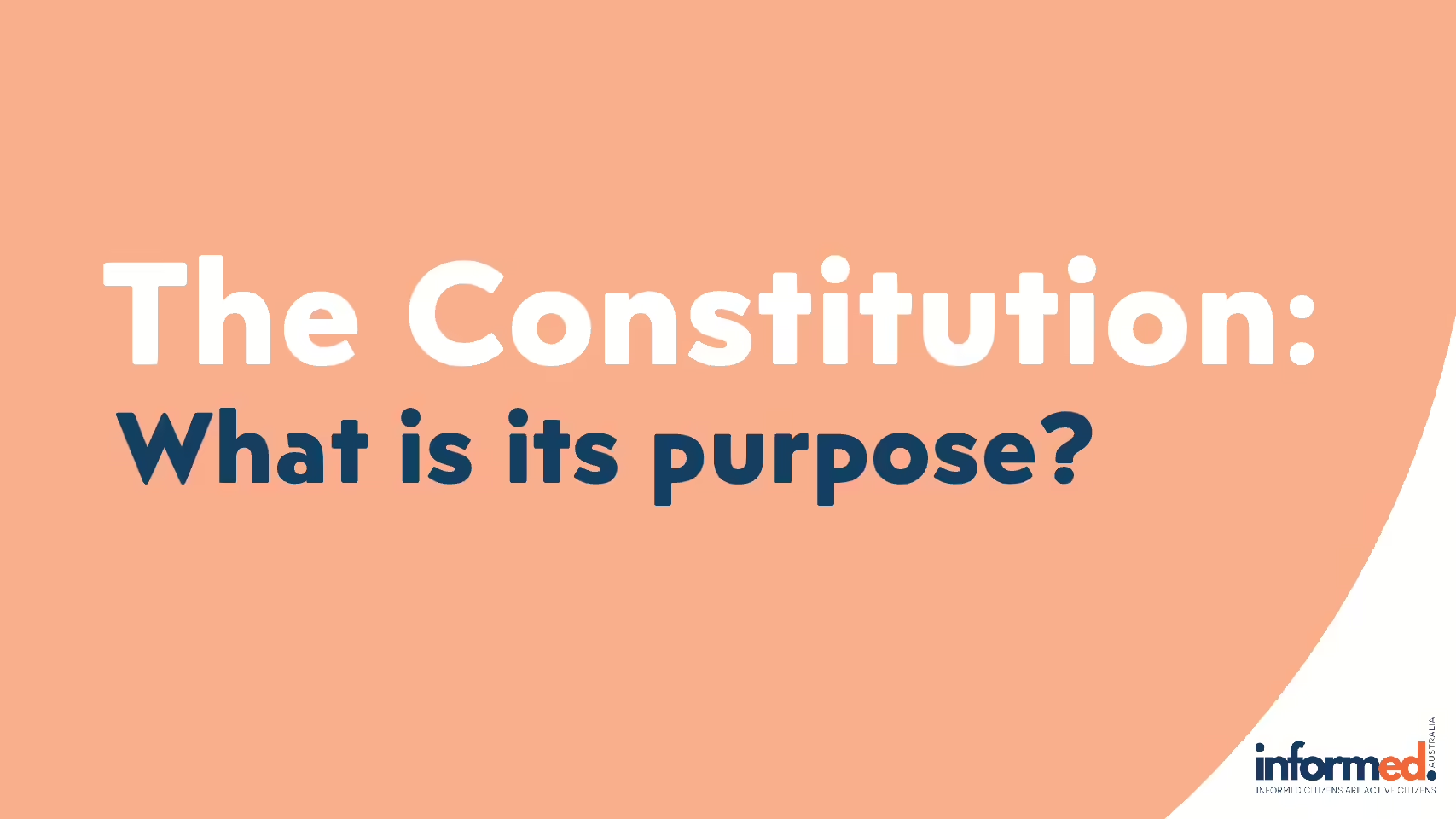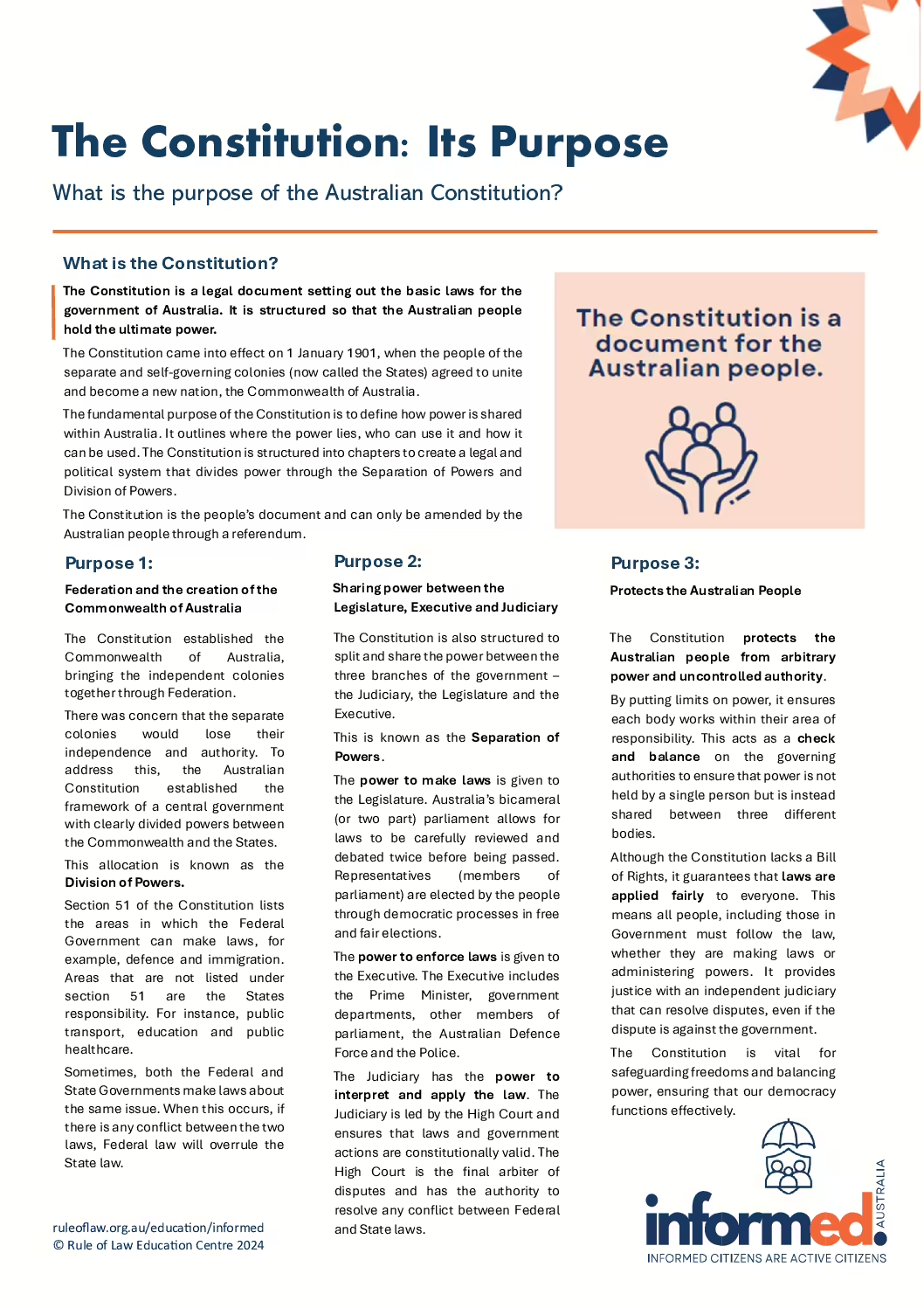The Constitution: Its Purpose
What is the purpose of the Australian Constitution?
What is the Constitution?
The Constitution is a legal document setting out the basic laws for the government of Australia. It is structured so that the Australian people hold the ultimate power.
The Constitution came into effect on 1 January 1901, when the people of the separate and self-governing colonies (now called the States) agreed to unite and become a new nation, the Commonwealth of Australia.
The fundamental purpose of the Constitution is to define how power is shared within Australia. It outlines where the power lies, who can use it and how it can be used. The Constitution is structured into chapters to create a legal and political system that divides power through the Separation of Powers and Division of Powers.
The Constitution is the people’s document and can only be amended by the Australian people through a referendum.
The Constitution is the document for the Australian People
Purpose 1:
Federation and the creation of the Commonwealth of Australia
The Constitution established the Commonwealth of Australia, bringing the independent colonies together through Federation.
There was concern that the separate colonies would lose their independence and authority. To address this, the Australian Constitution established the framework of a central government with clearly divided powers between the Commonwealth and the States.
This allocation is known as the Division of Powers.
Section 51 of the Constitution lists the areas in which the Federal Government can make laws, for example, defence and immigration. Areas that are not listed under section 51 are the States responsibility. For instance, public transport, education and public healthcare.
Sometimes, both the Federal and State Governments make laws about the same issue. When this occurs, if there is any conflict between the two laws, Federal law will overrule the State law.
Purpose 2:
Sharing power between the Legislature, Executive and Judiciary
The Constitution is also structured to split and share the power between the three branches of the government – the Judiciary, the Legislature and the Executive.
This is known as the Separation of Powers.
The power to make laws is given to the Legislature. Australia’s bicameral (or two part) parliament allows for laws to be carefully reviewed and debated twice before being passed. Representatives (members of parliament) are elected by the people through democratic processes in free and fair elections.
The power to enforce laws is given to the Executive. The Executive includes the Prime Minister, government departments, other members of parliament, the Australian Defence Force and the Police.
The Judiciary has the power to interpret and apply the law. The Judiciary is led by the High Court and ensures that laws and government actions are constitutionally valid. The High Court is the final arbiter of disputes and has the authority to resolve any conflict between Federal and State laws.
Purpose 3:
Protects the Australian People
The Constitution protects the Australian people from arbitrary power and uncontrolled authority.
By putting limits on power, it ensures each body works within their area of responsibility. This acts as a check and balance on the governing authorities to ensure that power is not held by a single person but is instead shared between three different bodies.
Although the Constitution lacks a Bill of Rights, it guarantees that laws are applied fairly to everyone. This means all people, including those in Government must follow the law, whether they are making laws or administering powers. It provides justice with an independent judiciary that can resolve disputes, even if the dispute is against the government.
The Constitution is vital for safeguarding freedoms and balancing power, ensuring that our democracy functions effectively.
Classroom Resources



